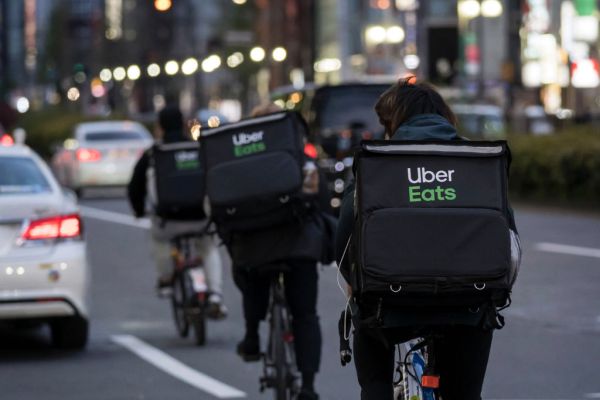Despite surging delivery demand, Uber’s third-quarter ultimately failed to meet investor revenue expectations in the third quarter.
Uber reported gross bookings of $14.7 billion, in the period, a decline of 10% compared to the year-ago quarter. That level of platform spend generated revenue of $3.1 billion for the company, down 18% from a year-ago result.
Analysts had expected the company to report revenues of $3.2 billion. The company’s top line miss was partially ameliorated by an earnings-per-share beat, with Uber losing $0.62 per share in the quarter, against an expectation of $0.65.
Uber’s third-quarter net loss was $1.1 billion, down a hair form a year-ago net loss of $1.2 billion.
The company’s two core segments were a tale of two cities: Uber’s ride-hailing (Mobility) business shrank, but made money, while Uber’s food delivery (Delivery) business grew, but continued to lose money.
In financial terms, Mobility-adjusted net revenues fell from $2.9 billion in the year-ago quarter to $1.4 billion during the most recent three-month period. That 52% decline led to a 61% decline in “segment adjusted EBITDA,” a heavily-tweaked profit metric, to just $245 million during Q3 2020.
Delivery, in contrast, saw its adjusted net revenue rise from $392 million in the year-ago period to $1.1 billion in the third quarter. That 190% gain led to a sharp decline in the Delivery unit’s unprofitability. The segment was able to cut its adjusted EBITDA from -$316 million in Q3 2019 to -$183 million in Q3 2020.
In total, Uber’s adjusted EBITDA for the company was -$625 million, about 7% worse than what it managed in the year-ago quarter.
Looking around the world, Uber’s fortunes varied greatly. In the United States and Canada, its revenues fell 30% in Q3 2020, compared to Q3 2019. In Latin America, a steeper 39% decline was recorded. But in both EMEA and APAC regions, revenues were up, rising 20% and 43%, respectively.
Uber wrapped Q3 with $6.2 billion in cash and equivalents, along with an additional $1.1 billion in short-term investments. On the other side of the ledger, Uber has around $6.7 billion in debt, net of current portion.
The American tech-ish giant reduced its costs greatly in Q3 2020 compared to Q3 2019, seeing its operations and support line-item dip, along with its expenses relating to R&D. General and administrative spending at the company rose from the year-ago period.
Shares of Uber are off 2.2% in after-hours trading.
Uber is sticking with its profitability goals, even with its mobility gross bookings still down significantly, Uber CEO Dara Khosrowshahi said during an earnings call Thursday.
“Based on our current cost structure we are confident that we can achieve total company adjusted EBITDA breakeven with mobility gross booking 10% to 20% lower than Q4 2019 levels,” Khosrowshahi said. “We now expect delivery to be breakeven sometime in 2021.”
[ad_2]
Source link


